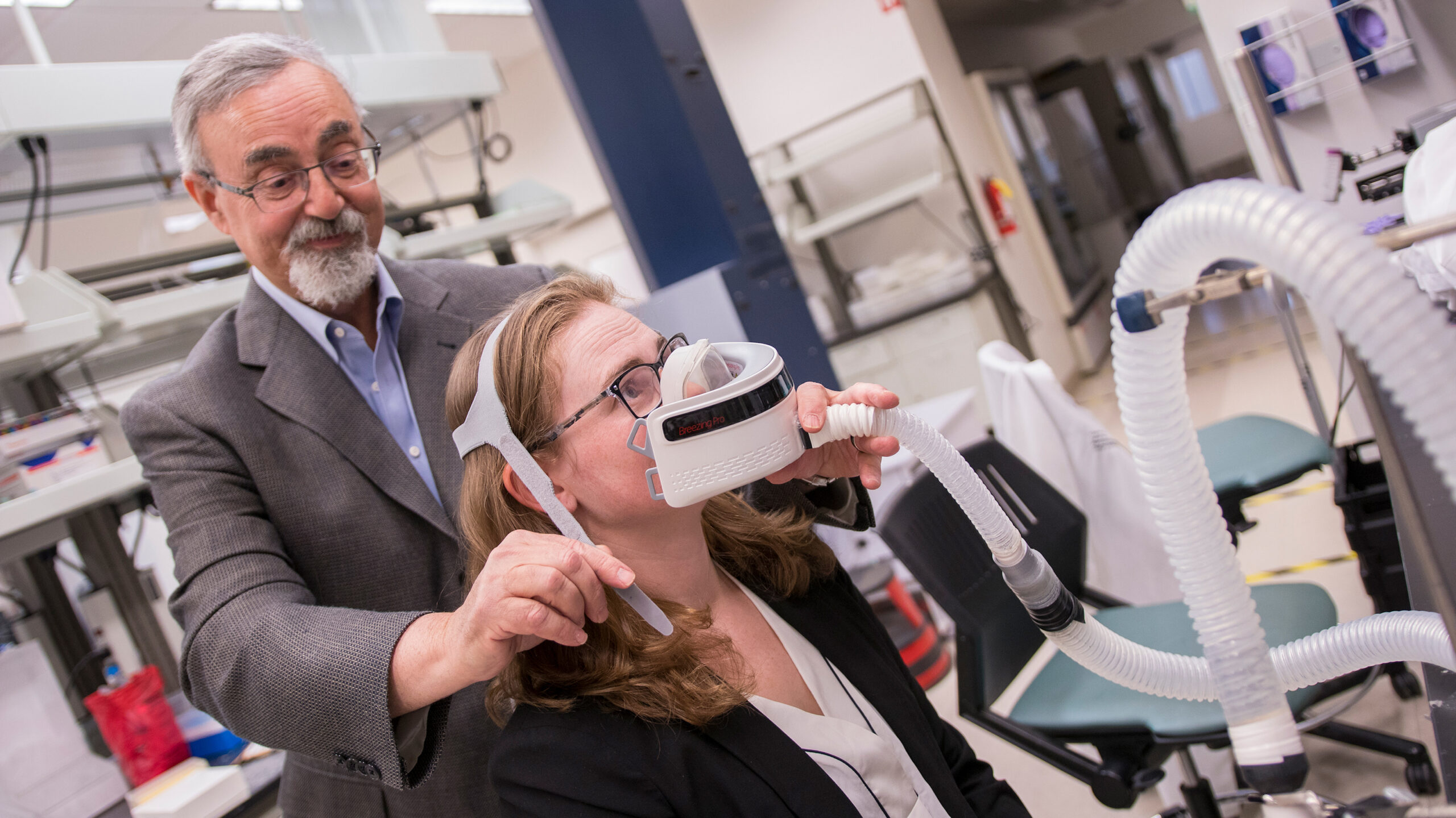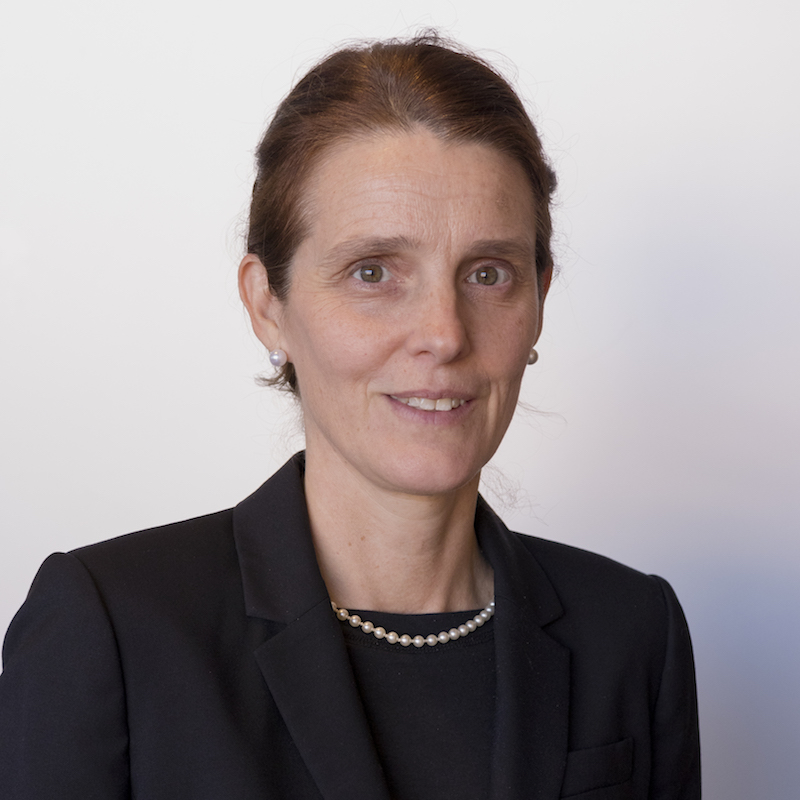
National Academy of Inventors elevates Forzani to senior member

Above: A wearable mask that is a component of a metabolic rate tracker is shown being tested by Dr. Stewart Mann (at left), a collaborator with Arizona State University's Center for Bioelectronics and Biosensors, and Mary Laura Lind, an associate professor of chemical engineering in the Ira A. Fulton Schools of Engineering. The device is a product of the TF Health Corporation, which does business as Breezing. Both ventures are spinoffs of research led by Fulton Schools Professor Erica Forzani. Photographer: Marco-Alexis Chaira/ASU(All photos in this article are archival images taken before the current pandemic social distancing and face covering requirements went into effect.)
Erica Forzani helped bring the world the first mobile device capable of detecting inflammatory biomarkers for asthma and the first point-of-care mobile sensor for real-time detection of carbon dioxide.
An associate professor of chemical engineering in the Ira A. Fulton Schools of Engineering at Arizona State University, Forzani also had a leading role in developing the first mobile metabolic rate tracker and a device for detection of ammonia in biological fluids to diagnose problems related to urea metabolism, liver disease and other diseases.

Erica Forzani earned the title of Fulton Entrepreneurial Professor for her success in transferring the results of her research into the marketplace.
One of her inventions — developed in collaboration with Dr. Bhavesh Patel, a Mayo Clinic physician — prevents dispersion of aerosols and moisture droplets in the air. Since the start of the COVID-19 pandemic, the device has been used in hospitals to help stop the spread of the disease and provide a safer overall environment for health care workers and patients.
Those are only a few of the medical devices and related technological advances for which Forzani has earned patents, some of which she shares with various colleagues.
Her contributions to these devices are among the noteworthy achievements for which the National Academy of Inventors, or NAI, has elevated Forzani to senior member status.
The NAI bestows this honor to acknowledge those who produce technologies with significant societal impacts, foster a spirit of innovation within their communities and educate the next generation of inventors.
Senior members “also embody an inventive and entrepreneurial drive to bring solutions out of the lab and into the world,” says Sally C. Morton, executive vice president of the ASU Knowledge Enterprise. “With their focus on developing technologies that make a difference in people’s lives, they reflect the goal in our university’s charter of assuming fundamental responsibility for the economic, social, cultural and overall health of the communities we serve.”
Forzani leads the company Breezing, which arose from sensor technology she helped to create. The company’s device is enabling health care professionals to obtain metabolic data used to design personalized nutritional, weight and obesity management strategies.
Co-founding the company is one of the ways she is fulfilling a personal goal to take her career beyond the classroom and the lab.
“I’ve always wanted to work in a hospital and to help implement what I am teaching and what my research is producing,” says Forzani, who has been given the prestigious title of Fulton Entrepreneurial Professor. She teaches in the School for Engineering of Matter, Transport and Energy, one of the six Fulton Schools.
Forzani also co-founded Sequitur Health Corporation with colleague Mary Laura Lind, a fellow Fulton Schools associate professor of chemical engineering, and Mayo Clinic physician Dr. Leslie Thomas. The ASU spinoff venture focuses on medical devices for disease diagnosis with biomarker detection in body fluids. The technology is based on two ideas for which Forzani has been granted intellectual property rights.
She is also director of the Medical Devices and Methods Laboratory in the ASU-Mayo Clinic Health Futures Center and a mentor for the Mayo Clinic MedTech Accelerator, a flagship program of the Mayo Clinic and ASU Alliance for Health Care. In addition, she works with the Center for Bioelectronics and Biosensors in ASU’s Biodesign Institute.
Colleagues who recommended Forzani for NAI senior membership noted that her collaborations with Mayo Clinic physicians have spanned from pulmonary care, exercise physiology, intensive care and nephrology to gastroenterology, cancer therapy and genetics. She has also worked with the Barrow Neurological Institute on improving care for people with dementia.
Forzani now has more than 90 peer-reviewed publications in science, engineering and medical research journals and 10 patents, 11 patent applications and three transferred intellectual properties. In addition, she is a member of the IEEE Journal of Translational Engineering in Health and Medicine editorial board and has recently been a guest editor of the ACS Sensors journal.
Mikala Kass, a communications specialist for ASU Knowledge Enterprise, contributed to this story.



































